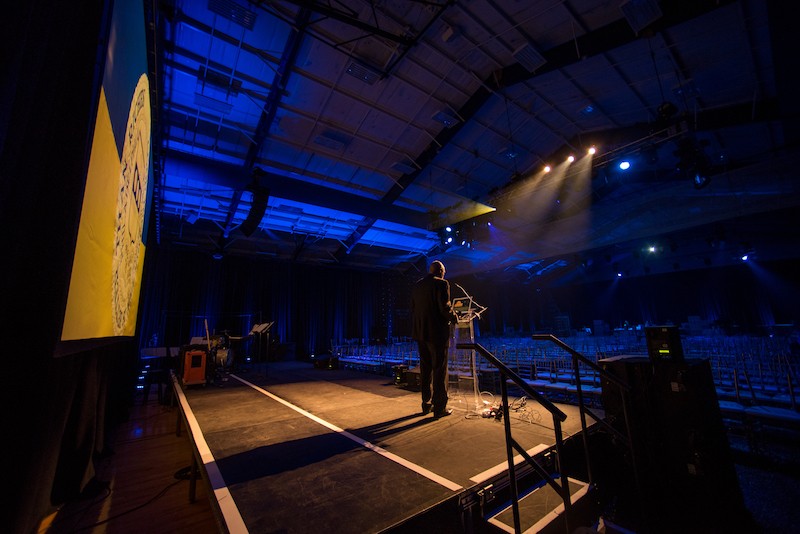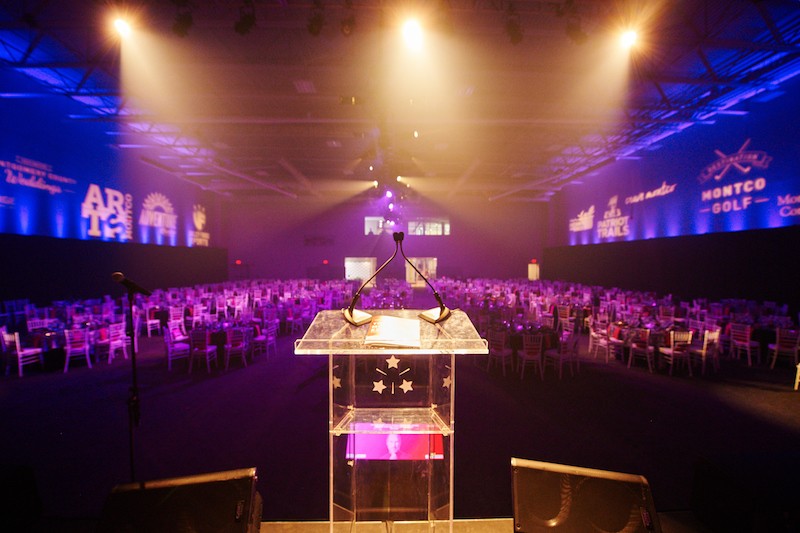We’ve already covered best practices when it comes to public speaking, but what happens when your speech or presentation is going to be televised or otherwise recorded on video? There are many additional considerations to make, and without the knowledge of what to expect and prepare for ahead of time, you risk compromising the message you’ve worked so hard to prepare. Today we’ll cover tips and tricks for appearing on camera and video, and what you can do to look like a seasoned pro.
Personal Appearance Tips
- Avoid wearing colors like green and orange, because they can adversely affect your appearance on camera. Stick with primary colors or earth tones. Red is acceptable in small doses, like a necktie. Otherwise, avoid too much red.
- Refrain from using bold makeup colors. Makeup should be tasteful and neutral, and should be appropriate for stage/screen appearances… unless you want to look like Mimi from the Drew Carey Show.
- Keep in mind all black fabrics aren’t equal. Under proper lighting, nuances between different fabrics are much more obvious, and it’s important to consider this if you plan on wearing suit separates.
- Frizzy hair is dramatically accentuated on camera, especially with lighting. Use hairspray to keep the flyaways tied down.
Body Language and Positioning Tips
- Chances are, there’s a spot marked on the stage to indicate the best place to stand during your presentation. Stay as close to that mark as possible with little deviation, as that’s the designated “sweet spot” for lighting and camera angles.
- If there’s a screen sharing the stage with you, be considerate of the location of said screen. Do not walk in front of the visuals that you’re displaying to your audience unless necessary.
- If you’re fitted with a lavalier microphone pack or you are using a handheld, wireless microphone, be careful not to walk in front of the speakers. This can cause audio feedback, also known as the dreaded ear-piercing noise.
- Only turn as far as 45º from the audience, so you’re always at least partially facing the audience. Angle your body out. You should always be partially facing the back of house and you want to avoid strictly profile angles.
Preparation Tips
- Arrive plenty early to practice your speech on the stage with the podium so there are no surprises or fumbles when it matters most.
- Inspect the stage and familiarize yourself with the location of wires, steps, etc, so you don’t trip or accidentally walk off the edge of the stage.
Tips from the Audio/Visual Professional
- If you want to make sure the audience can see you, then you need to see the light. If you look upwards and the lighting shines in your eyes, everything is going according to plan.
- Don’t look at the camera. Instead, look over the camera, at the camera person, or straight to the back of the room. It helps to pick a spot on the wall and focus on that.
- Learn what the indicator lights mean from the speaker timer, and respect the indications during your speech. If the timer reveals you’re approaching the end of your presentation, wrap it up to allow the remainder of the program to go according to schedule. If you don’t know what the lights mean, ask for a demonstration.

 February 14, 2018
February 14, 2018  Synergetic
Synergetic  Case Study
Case Study 


 August 23, 2025
August 23, 2025  Synergetic
Synergetic  About Us
About Us